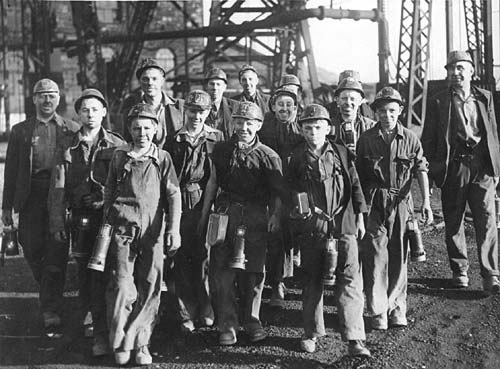In my last blog I addressed the subject of king coal. It does not surprise me that most of you did not realize the magnitude of U.S dependence on this filthy fossil fuel. As mentioned before, I have various personal ties to this particular mineral and it has had an enormous effect on both my local economy and the national economy. Nowadays, with the big push towards cleaner energy, coal and coal mining have become things frowned upon by increasing amounts of Americans. In this blog I will discuss the “what next” for coalmines. As more and more mines are being closed what effect does this have on the environment? There is much more to it then just stopping operation. In many cases the environment is hurt more by the abandoned mine than the mining operation itself. Let me explain.

What was once the main road running through Centralia, PA

Centralia, PA c.1981
These may look like images from The Walking Dead, but this is actually what remains of a town. Centralia is a borough and ghost town in Columbia County, Pennsylvania. Its population has dwindled from over 1,000 residents in 1981 to 12 in 2005, as a result of a mine fire burning beneath the borough since 1962. Like my small town, Centralia was located on an abundance of anthracite coal and drew attention during the mining boom. When the industry collapsed in the early 60’s the coal companies closed the mines up and left them abandoned. In 1962, a group of firefighters set fire to an old dump site. However, the fire was not fully extinguished. An unsealed opening in the dump pit allowed the fire to enter the labyrinth of abandoned coalmines beneath Centralia. The fire has been burning ever since.

Attempts to extinguish the fire were unsuccessful, and it continued to burn throughout the 1960s and 1970s. Beginning in 1980, adverse health effects were reported by several people due to the byproducts of the fire: carbon monoxide, carbon dioxide and a lack of healthy oxygen levels. In 1979, locals became aware of the scale of the problem when a gas-station owner and then mayor, John Coddington, inserted a stick into one of his underground tanks to check the fuel level. When he withdrew it, it seemed hot, so he lowered a thermometer down on a string and was shocked to discover that the temperature of the gasoline in the tank was 172 degrees.
Statewide attention to the fire began to increase, culminating in 1981 when a 12-year-old resident named Todd Domboski fell into a sinkhole 4 feet wide by 150 feet deep that suddenly opened beneath his feet in a backyard. His cousin, 14-year-old Eric Wolfgang, in pulling Todd out of the hole, saved Todd’s life, as the plume of hot steam billowing from the hole was measured as containing a lethal level of carbon monoxide. In 1984, the U.S. Congress allocated more than US$42 million for relocation efforts. Most of the residents accepted buyout offers and moved to the nearby communities of Mount Carmel and Ashland. A few families opted to stay despite warnings from Pennsylvania officials.The Centralia mine fire extended into the town of Byrnesville, Pennsylvania and caused this town to also be abandoned.
As you can tell from this extreme example, abandoned coal mines can be just as hazardous to people and the environment as operating mines. With advances and technology and a push towards clean, renewable energy sources, more and more coal mines are being closed up and abandoned. However, we can not let coal companies just flee the mess they made. Abandoned coal mines are a serious threat to local communities, animals, and the environment. Simply shutting off the machines and boarding up the entrances is not an acceptable way to retire a coal mine. We can not afford to have any more Centralia’s.







